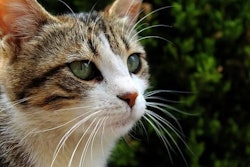
The Association of American Feed Control Officials (AAFCO) held its "mid-year" meeting on January 16–18 in Mobile, Alabama, USA. The deliberations of the Pet Food Committee, which obviously affect all pet food and specialty pet food manufacturers, were discussed in the March 2017 “Petfood Insights” column of Petfood Industry magazine. However, deliberations of the Ingredient Definitions Committee also have significant impact on the pet food industry.
As is typical at a meeting of this committee, there were a number of procedural actions; e.g., new tentative definitions established, tentative definitions moved to official status and amendments or editorial changes made to existing definitions. A new section to be included in the AAFCO Official Publication is a listing of those ingredients subject to a Generally Recognized as Safe (GRAS) notification that subsequently received a "no questions" letter (i.e., tacit approval) by the US Food and Drug Administration (FDA). While these technically have a different regulatory status from those ingredients that are AAFCO-defined, their listing will make it easier for both regulators and industry to understand that they should be acceptable nonetheless.
There were also plans discussed for a systematic reclassification of the direct-fed microbials listed in the Official Publication. Both to bring the currently used nomenclature up-to-date and to correct previous errors in classification, many of the scientific names of microorganisms will need to be changed. When that task is completed, pet food manufacturers that include probiotics in their products may need to perform some serious label revisions.
Hemp: an unsanctioned pet food ingredient
Perhaps more important to the deliberation was discussion of what can't go into pet food, rather than what can. Among the substances discussed as not acceptable in animal feeds were hemp-derived ingredients. FDA has posted a "Q&A" paper regarding the use of marijuana-based products for both people and pets (https://goo.gl/QYGzEP). With regard to its use in food, FDA's position is that cannabidiol (CBD, the non-psychoactive component of hemp associated with purported health benefits) is an unapproved drug, hence any food (including animal feed or pet food) containing it would be actionable as an adulterated product. AAFCO has subsequently issued guidelines to note that to date, no hemp-based ingredients have been defined or otherwise sanctioned for use in animal feed, hence any inclusion in a feed or pet food would be objectionable to state feed control officials (https://goo.gl/sgYBwS).
Human food ingredients: a matter of definition
Another common practice among many pet food manufacturers is to add human food ingredients, such as fruits and vegetables, to their products. Although these items mostly are not expressly defined by AAFCO, they are largely acceptable for use in pet foods based on their long histories of safe use in food in general. However, AAFCO has made it known that does not mean that the by-products or derivatives of those same ingredients are also acceptable. For example, while blueberries or spinach may be easily recognizable as suitable food (and hence suitable pet food) ingredients, an extract, fraction or pomace derived from those ingredients may be materially different in composition, hence is no longer the same ingredient and does not enjoy that same long history of use.
So, in order to allow for use of these substances, new AAFCO definitions for each ingredient must be established. For example, pea protein, pea starch, pea fiber and pea flour all had to be AAFCO-defined in recent years, even though peas are already a commonly acceptable food ingredient. AAFCO defined "(fruit) pomace" (AAFCO #60.112) a couple of years ago for the purpose of allowing for use this juicing by-product of a variety of human-edible fruits. However, the only fruit source allowed today under the definition is apple, which in fact was already defined for use in animal feed many years ago (1929, to be exact).
Unless and until someone submits new definition petitions for other fruit pomaces, such as those obtained from the juicing of pears, pomegranates or cranberries, they will remain objectionable to state feed control officials. In the same vein, except for that derived from tomatoes, each vegetable pomace intended to be used in pet foods will need to be defined before such use would be considered acceptable.
Insects: still under scrutiny as a pet food ingredient
Finally, the feeding of ingredients derived from insects, e.g., cricket meal, as an alternative protein source is being actively pursued in the fields of both human and animal nutrition. Interestingly enough, FDA appears to have minimal concern regarding the inclusion of insect-derived materials in human food products, only advising manufacturers that it is their burden to ensure that the insects are clean, properly processed and otherwise suitable for human consumption, rather than requiring a GRAS determination or other action to document safety and utility for that use.
AAFCO, on the other hand, does not appear to be so cavalier, indicating that new AAFCO definitions for each insect, type of ingredient (e.g., flour, meal, protein concentrate) and intended species would need to be established first. To date, only one insect, black solder fly larvae (AAFCO #T60.117) has been defined by AAFCO, and that is limited to use in salmonid feeds. Hopefully, this new area of concern by regulators will not adversely interfere with the very long and common practice of feeding insects to the many species of specialty pets that thrive on bugs like crickets and mealworms in their diets.
For more insights by Dr. Dzanis

















